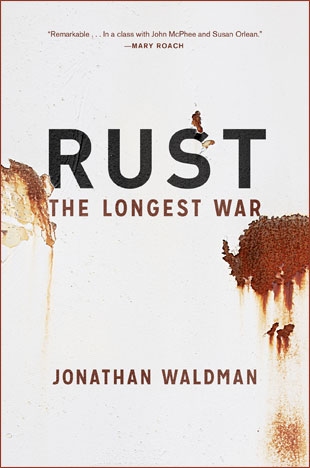"Like an old sage, she [photographer Alyssha Eve Csuk] walked casually through a dark room with black paint peeling off a maroon and yellow patch of metal. 'This at one time was cobalt blue,' she said. 'Cobalt blue. It's just amazing how it's changed over the years.' She walked around a furnace, and behind massive slag cars — now cauldrons full of green, slushy water. She jumped down a three-foot ledge, and then proceeded into a courtyard, where she looked up at the side of a building. 'The whole panel was blue last time I photographed it. Now it's black. We should just try it anyway.' A flock of geese flew overhead, following the river. For a second, their squawking sounded like voices.
"All of a sudden, the Bethlehem Steel Works seemed like a wonder of the world, a historical artifact as impressive as a pyramid. A few hundred feet away stood blast furnace A, the oldest standing blast furnace of its kind in America. Soon after it was built, in 1914, Bethlehem Steel produced twenty-five thousand shells a day and became known as 'America's Krupps.' Sixteen years earlier, Bethlehem Steel was the place where Frederick Taylor had worked out how to make high-speed tool steels that could cut three times faster than anything else, which captured the attention of Harry Brearley, the father of stainless steel. Of Bethlehem, its president in the early twentieth century, Charles M. Schwab, used to say he wasn't in business to make steel but to make money. Bethlehem made plenty of money, but it also made bank vaults, battleships, rail ties, and the enormous 140,000-pound axle at the center of Ferris's famous wheel. The company built the USS Lexington, America's second aircraft carrier. That beam captured in the iconic 1932 black-and-white photo, with eleven workers sitting on it, eating a carefree lunch eight hundred feet above New York City: that's Bethlehem Steel steel.
Numerous are the elegiacs for Bethlehem. The authors of Forging America: The Story of Bethlehem Steel call the Steel 'silent,' 'shuttered,' 'stark,' and 'empty.' The author of Crisis in Bethlehem: Big Steel's Struggle to Survive calls the Steel a decaying, abandoned wasteland, lamenting that pigeon droppings cover idled rolling tables. When I asked Csuk about this mourning, she said the backdrop only made coming upon her abstracts that much more delightful. While the authors and historians focused only on the obvious, Csuk got to dance between two worlds. 'While many may look at these sites as brownfields littered with abandoned buildings and humps of rusting metal,' she explained later, 'I find in contrast an emerald city of jewels amidst a dark and mysterious place.'
"The Times seemed to agree. In the eight-photo spread titled "Seeing Beauty in the Rust Belt" that appeared on Sunday, May 15, 2011, the author wrote, 'During the decline of the American steel industry, Bethlehem Steel's properties have suffered. The result may be bleak, but it's not boring.' "
